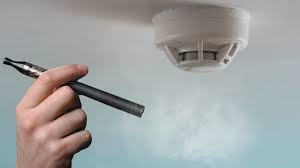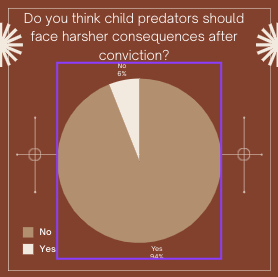When it comes to any school setting, whether it’s elementary, middle, or high school, safety is always the number one priority. If that’s the case, how are schools taking the extra steps and procedures to keep students and staff safe, knowing what the world has turned into? Some of the solutions have been metal detectors, but having to even consider that is simply sorrowful. Some people might say it’s ridiculous to have them, but what other procedures would schools consider to keep them safe? Just this past year, there have been countless school threats, let alone active ones involving guns and bombs. According to the article “The Educators School Safety Network,” “In 2023-2024, there were 158 swatting incidents.” This means there were 158 prank phone calls to alert the emergency services to bring out a large number of armed police officers to schools between the years 2023 and 2024. However, when it comes to vape detectors, more schools are installing high-tech vape detectors in bathrooms and locker rooms to curb student use of e-cigarettes. The question is: how effective would these “high-tech” detectors be?
An online business called Garret sells equipment that is considered “top tier” security solutions tailored to meet the unique needs of various sectors. “Our advanced handheld and walk-through metal detectors are designed to ensure safety and protection across multiple environments. From healthcare facilities and industrial operations to schools and government buildings, our state-of-the-art technology helps safeguard against potential threats, ensuring a secure and safe environment for all,” said Garrett. The website also said, “…about 2 percent of elementary schools, 7 percent of middle schools, and 10 percent of high schools in the U.S. use metal detectors.” These percentages aren’t very high. Potential reasons for that could be cost and maintenance constraints. Operational challenges and limited effectiveness contribute to lower adoption rates as well. Alternative solutions, such as random metal detector sweeps and comprehensive safety programs are often preferred. Concerns about creating a prison-like environment and potential overreliance on detectors also influence decision-making. Additionally, budget allocations prioritize other safety measures, leading to varying implementation rates across schools.
Having metal detectors in schools is crucial for ensuring safety and security. They deter individuals from bringing weapons, detect potential threats early, and prevent injuries and fatalities. Metal detectors minimize risks of shootings, stabbings, and gang-related violence, creating a secure environment for students and staff. They also promote a sense of security, reduce anxiety, and demonstrate a commitment to student safety. By installing metal detectors, schools adhere to regulations, reduce liability, and enhance overall security measures, making them an essential component of a comprehensive school safety plan. Added precautionary measures may catch the attention of parents as well.

Why would parents not be open to installing these? It’s quite unusual to be against vape or metal detectors since these devices are designed to enhance safety. Vape detectors can help identify and reduce vaping among students, which is a growing health concern. However, some teachers, staff, and parents may think otherwise. Chris Raymond, Associate Principal, said, “How well do they work? Do they pick up everything we want it to pick up? We’re not sure it would be effective.” However, an article by Avigilon stated, “While there have been reports of vape and nicotine detectors being circumvented by actions like obscuring sensor units and filtering vapor through items of clothing, modern devices are considered to be highly accurate.” Therefore, vape detectors are quite effective at detecting vaping activity, especially in enclosed spaces like school bathrooms or locker rooms. They work by sensing the chemicals and particles produced by e-cigarettes and vapes. When these detectors pick up on such substances, they can send alerts to school administrators or security. While no system is foolproof, vape detectors are a valuable tool in reducing vaping among students and maintaining a healthier environment.
Raymond also says part of the reason these aren’t installed is that “There’s a cost involved, but it has been given some thought.” So what made that thought go away? Is something too expensive to save an individual’s life? Cost shouldn’t be a problem. There are a bunch of funding alternatives that schools can turn to. A business called “Grants” is an online funding resource for vape detectors. The business says “These grants are typically funded by government agencies, private foundations, or non-profit organizations with one thing in common: a goal to promote school safety and student well-being.” That’s one finance out of the way. Furthermore, Raymond has confirmed that there have been threats before. The school had to keep students and staff past 3 three o’clock because of some sort of threat last year. There’s been a majority of rumors of guns being brought to football games, fights breaking out, and police involved.
Lily Crawford, junior, can confirm that the high school does not have metal detectors or vape detectors located in the bathrooms. Crawford also says that emergency drills are conducted regularly for students in case of a break-in, rumored threat, or anything that could harm an individual. As mentioned before, students’ safety is the number one priority. So has anyone asked how students have felt without these objects installed whether it is vape detectors or metal detectors? Would students prefer these in the school to make them feel more safe and comfortable? Crawford also says she does feel comfortable because nothing has ever happened, but she also said, “Maybe with them, it would make certain people feel safe, anything could happen. But I guess it could make a lot of people feel more safe.” This is a valid reason for all schools to invest in taking these extra steps and measures to make students and staff feel comfortable. What kind of messages do students get without having these? What would students think? Crawford said “The school doesn’t care that much. If there’s kids in the bathroom doing stuff, that could show they aren’t gonna do anything about it anyway. So if you have smoke detectors, it will show kids that they will and can do something about it.”
With the addition of these security measures, students may view schools as having a trusting environment, where they feel respected and valued, allowing a relaxed atmosphere focused on education without having to worry. That goes for parents too! Parents want to know that their child is getting the care and protection needed. However, some students may worry about safety concerns and might feel vulnerable without these security measures. Others might see it as an opportunity to promote responsibility. Overall, students’ perspectives vary, balancing personal freedom, safety, and school culture considerations.









